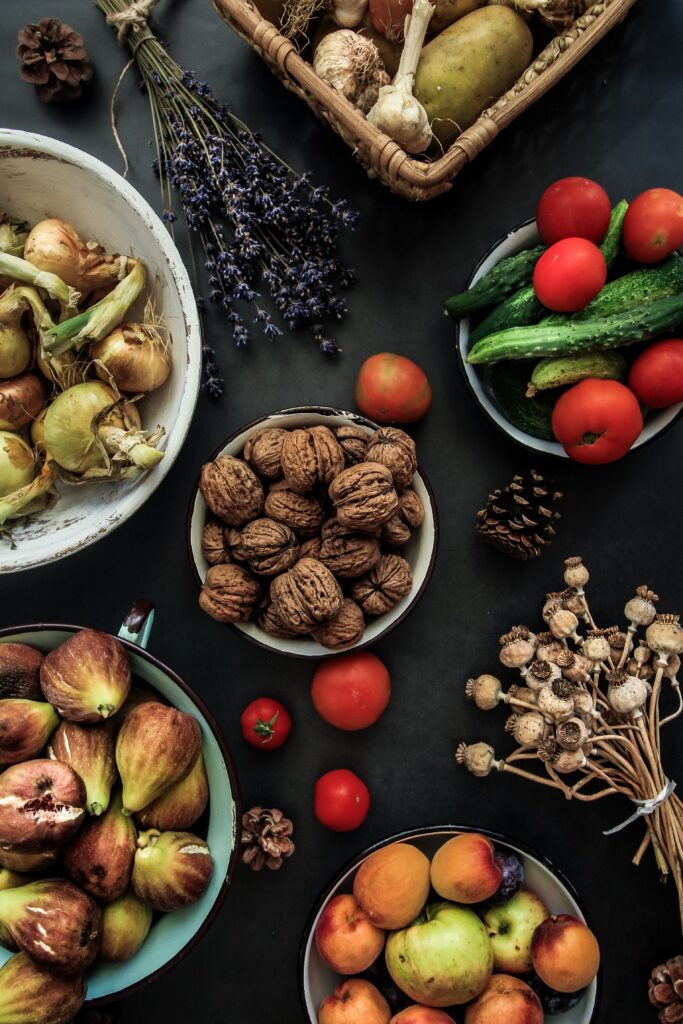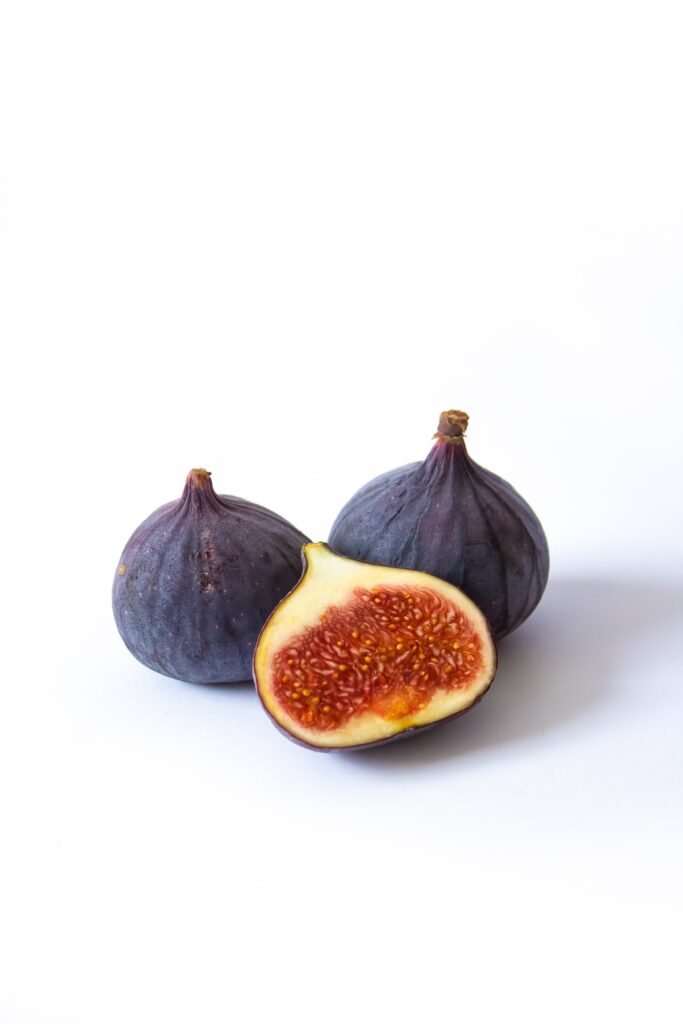In this informative article, readers will gain valuable insight into the selection, storage, and cooking of fresh figs. The article starts by highlighting the delicate nature of these small fruits and the brief shelf life they have once picked. Readers will also learn about the prime harvesting season for fresh figs and key indicators of ripeness such as softness, smooth skin, and a pleasant aroma. Accompanying this information is essential guidance on how to properly store fresh figs, including freezing options. For those who prefer canned or dried figs, the article provides helpful information on their storage and usage. To conclude, readers are tantalized with a variety of fig recipes that showcase the versatility of this flavorful and fragile fruit. Overall, this article serves as a comprehensive guide to successfully incorporating fresh figs into one’s culinary repertoire.
How to Select Fresh Figs

Click Here To Purchase Fresh Figs
Shelf life of fresh figs
The shelf life of fresh figs is brief. They must be picked ripe from the trees as they do not ripen well once picked. A very firm fig is not ripe and will not properly ripen further. The prime harvesting season for fresh figs is mid-June to mid-October. If you see them in a market, buy them only if you plan to use them quickly. Fresh figs will spoil within seven to ten days of harvesting. In most cases, this means you have about three days at most to use them at home.
Ripe figs
Select figs that are clean and dry, with smooth, unbroken skin. The fruit should be soft and yielding to the touch, but not mushy. Use your nose and smell the fruit. If the fig smells slightly sour, it has already begun to ferment. When figs get beyond their prime, they begin to collapse inward and lose their round shape.
Harvesting season
The prime harvesting season for fresh figs is mid-June to mid-October. This is the time when figs are at their peak freshness and flavor. It is important to keep in mind that fresh figs do not ripen well once picked, so it is best to buy them when they are already ripe.
Selecting ripe figs
When selecting ripe figs, look for ones that are clean and dry, with smooth, unbroken skin. The fruit should be soft and yield to gentle pressure when pressed. However, be cautious as figs should not be too mushy as that may indicate overripe or spoiled fruit. Another way to determine ripeness is by using your nose. Ripe figs have a sweet aroma, while any hint of sourness indicates that the fruit has started to ferment.
Signs of spoilage
As figs age and spoil, they will begin to collapse inward and lose their round shape. The skin may become wrinkled and discolored, and there may be visible signs of mold or decay. If you notice any of these signs, it is best to discard the figs as they are no longer safe or appetizing to consume.
Storing Fresh Figs

Importance of keeping figs cold
To prolong the freshness and quality of fresh figs, it is important to keep them cold. The cool temperature helps to slow down the ripening process and prevent spoilage.
Immediate use or refrigeration
If you plan to use the figs immediately, store them at room temperature in a cool and dry place. However, if you want to extend their shelf life, it is best to store them in the refrigerator.
Freezing fresh figs
Fresh figs can also be frozen to preserve them for longer periods of time. However, it is important to note that freezing can alter the texture of the figs.
To freeze fresh figs, start by washing them thoroughly and removing any stems or leaves. Then, either freeze them whole or slice them into desired pieces. Place the figs in an airtight container or freezer bag and remove as much air as possible before sealing. Label the container with the date and freeze for up to ten to twelve months.
Handling delicate fruits
Fresh figs are delicate fruits that can easily bruise or become damaged during handling. It is important to handle them with care to prevent any unnecessary damage. When washing figs, be gentle and avoid applying too much pressure. Pat them dry with a soft cloth or paper towel after washing.
When storing figs in the refrigerator, place them in a single layer in a plastic bag or container to prevent any crushing or bruising. Avoid stacking heavy items on top of the figs.
Canned or Dried Figs
Alternatives to fresh figs
If fresh figs are not available or out of season, canned or dried figs can be a suitable alternative. Canned or dried figs are readily available in most supermarkets and can be used in various recipes.

Availability and cost
Canned or dried figs are often more readily available and can be purchased throughout the year. They are also relatively inexpensive compared to fresh figs, making them a cost-effective option for those on a budget.
Storage options for canned figs
Canned figs have a longer shelf life compared to fresh figs. They can be stored in your pantry for up to a year. Once opened, transfer any leftover canned figs to a covered container and store them in the refrigerator. They will remain fresh for up to a week.
Storage options for dried figs
Dried figs have a longer shelf life compared to both fresh and canned figs. They can be stored in their original sealed package at room temperature for up to a month. For extended storage, it is recommended to keep them in the refrigerator, where they can be stored for six months to a year. Once opened, transfer the dried figs to a sealable plastic bag and store them in the refrigerator to maintain their freshness.
Fig Recipes
Versatility of figs in cooking
Figs are highly versatile fruits that can be used in various sweet and savory recipes. They add a unique and delicious flavor to both desserts and main dishes.
Sweet and savory recipes
Figs can be used to create a wide range of sweet dishes, such as cakes, tarts, and jams. They can also be incorporated into savory recipes, such as salads, pizzas, and roasted meat dishes.
Swapping dried figs for fresh figs
If fresh figs are not available, dried figs can be used as a substitute in some recipes. However, it is important to note that dried figs have a different texture and flavor compared to fresh figs. Adjustments may need to be made to accommodate the differences.
Delicious fig-based recipes
There are countless delicious fig-based recipes to explore. From appetizers to desserts, figs can elevate the flavor profile of any dish. Some popular fig recipes include fig and goat cheese crostini, prosciutto-wrapped figs, and fig and honey cake.
What Are Figs?
Introduction to figs as fruits
Figs are small fruits that grow on trees belonging to the Ficus genus. They have a unique pear-like shape and a soft, luscious flesh. Figs are commonly consumed both fresh and dried.
Basic characteristics of figs
Figs come in a variety of colors, including green, yellow, purple, and black. The skin of figs is thin and delicate, while the flesh is soft and sweet. Figs contain small, edible seeds that add a slight crunch to their texture.
Nutritional benefits of eating figs
While figs may not be particularly rich in vitamins or minerals, they are a good source of dietary fiber. They also contain antioxidants, which can help protect against cell damage. Figs are a naturally sweet fruit and can be enjoyed as a healthier alternative to processed sweets.
